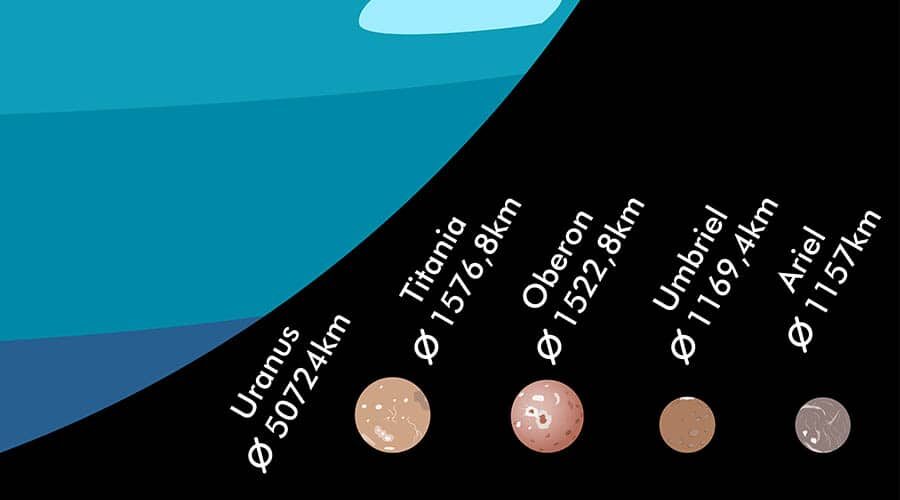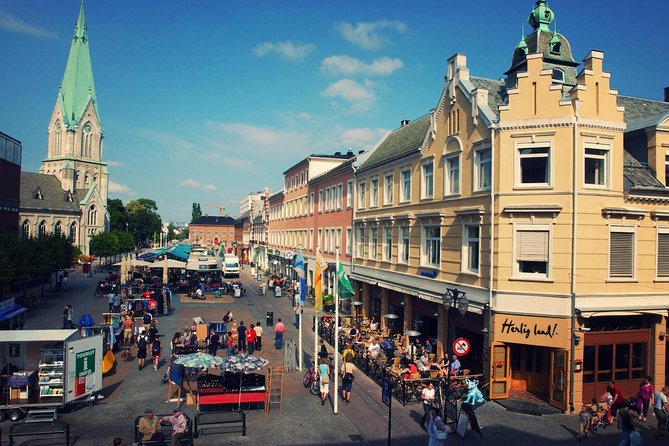10 Umbriel Moon Facts | Great Facts about Umbriel
Umbriel is an interesting moon which we haven’t got a lot of information about. It’s one of the larger moons orbiting the planet Uranus, and it’s the darkest of it’s moons too, making it difficult to see it’s surface clearly. Let’s look at some interesting facts about the moon Umbriel.
- Umbriel has a radius of approximately 383 miles (584.7 km).
- This makes Umbriel about 1/3 the size of the Earth’s moon, and 1/5 the size of the biggest moon in our solar system, Ganymede.
- It orbits the planet at a distance of around 165,000 mi (266,000 km), which makes it the 3rd furthest out of Uranus’s major moons.
- Umbriel takes around 4 days to complete one full orbit around Uranus (around 99 hours).
- Umbriel is named after a character in a famous poet by the English Poet Alexander Pope.
- The planet was discovered all the way back in 1851 by William Lassell, a man who was well known for his contributions to the reflecting telescope.
- Umbriel has many craters across it’s surface, more than any other Neptunian moon except Oberon.
- The largest crater on the moon Umbriel is called Wokolo, and has a diameter of more than 208km.
- The average temperature on the moon Umbriel is approximately -200°c.
- The only images that we currently have of Umbriel are from 1986, from the famous Voyager 2 mission which is still going through interstellar space!

Umbriel is a character in the famous Alexander Pope play The Rape of the Lock. This is not as sinister as it sounds, as the “rape” in this poem actually refers to the theft of a lock of hair. In the poem, Umbriel is actually a gnome who travels to a cave and annoys one of the main characters, Belinda.
Umbriel has a very low density, which when we look at other moons, typically means that they are made up of a large percentage of water ice. Scientists think that this makes up at least 40% of it’s overall mass. It’s thought that like any moons, Umbriel is made up of rocky/metal core surrounded by an ice mantle.
The only detected substances on Umbriel’s surface is water and interestingly, carbon dioxide. This may indicated that the moon has a very thin atmosphere primarily consisting of this gas. Umbriels surface is very dark and non reflective, with a slight blue tint. There are many large craters scattered across it’s surface, and they are the only feature that we have been able to identify on this moon.
Amongst the five main moons that orbit Uranus, Umbriel’s distances is third, right in the middle. It’s also the third largest moon of Uranus too, right after Titania and Oberon. It has quite a low orbital period of 4.1 days, and during this, it is always faced towards the planet (which we call a tidally locked moon). It takes Uranus 84 years to orbit Earth. This means that Umbriel spends half of this time facing the Sun, and the other half sheltered away behind the big body of Uranus.
Umbriel is certainly large enough to be seen with a telescope, but it does have a very dark surface and it is a long way from the Earth. Due to this, it’s going to be difficult to see Umbriel with an amateur telescope.
Overall, all we really know about Umbriel is it’s size and it’s surface – much of what we think about this moons core is all theoretical, based on our experience with other satellites. Though hopefully in the coming years, we can learn more about Umbriel and the other Neptunian moons.



